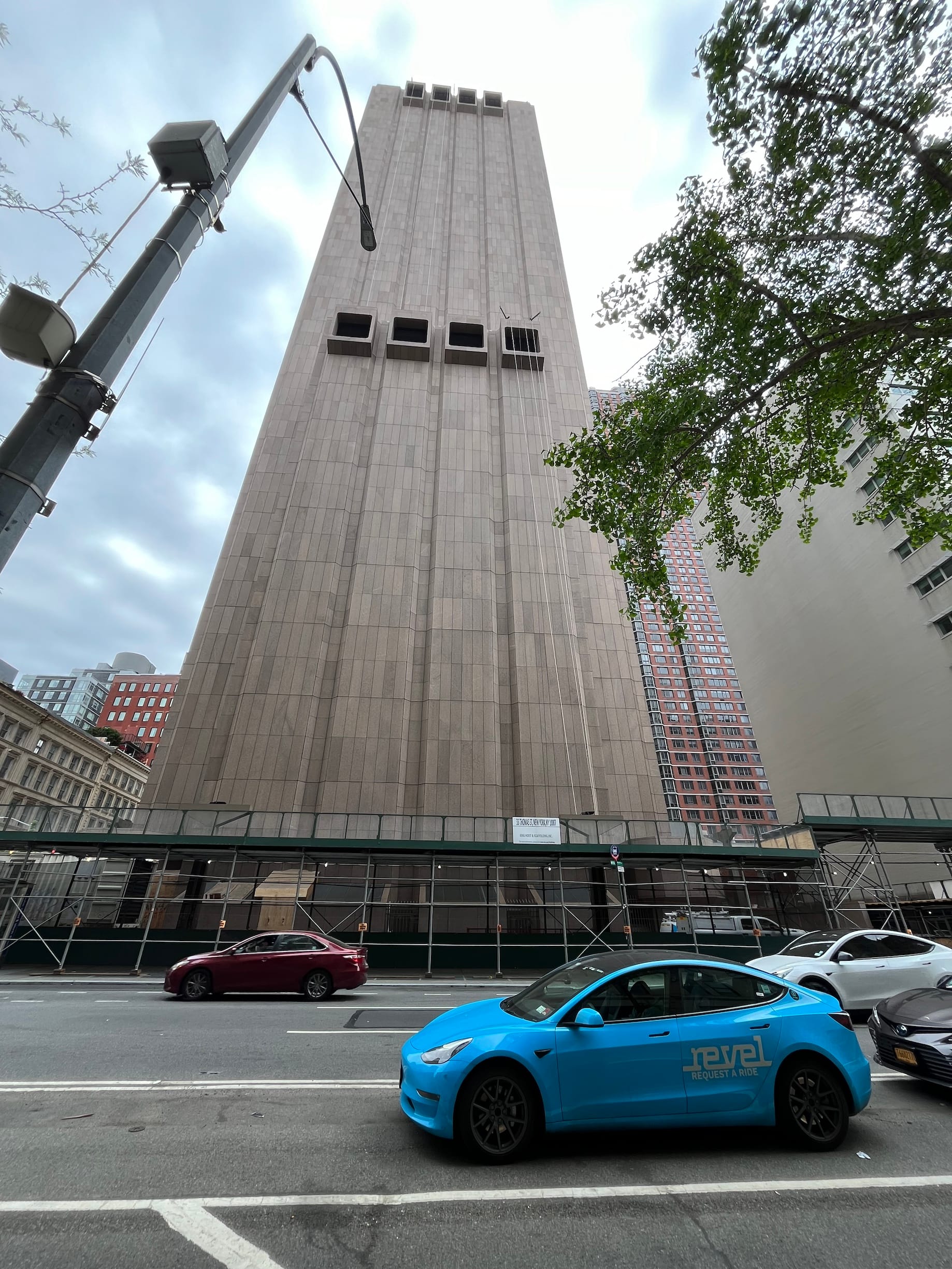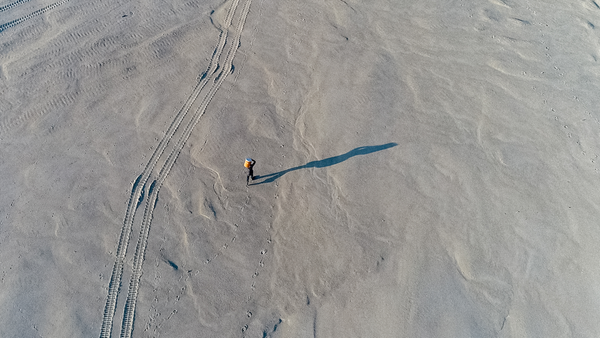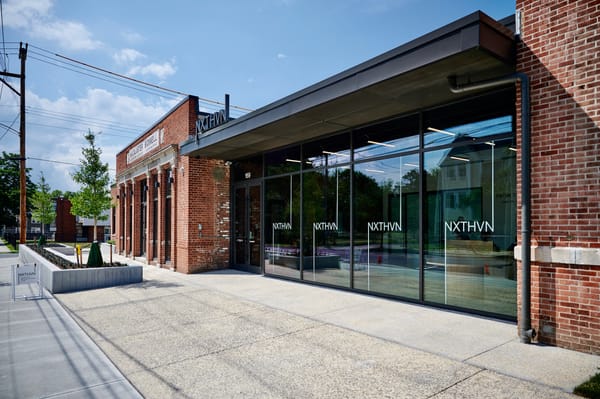A Cold, Hard Tour of Brutalist New York City
With stops at the Salt Shed and the Tribeca Synagogue, the tour was among the highlights of Jane’s Walks, an ongoing series of curated strolls across the city.

On a brisk Saturday morning in early May, tour guide Liza Pagano waited for a group of New Yorkers to meet at the foot of an imposing Tribeca skyscraper that exemplifies Brutalism in the city.
The windowless gray concrete cast tower at 33 Thomas Street, commonly known as the AT&T Long Lines Building, was completed in 1974, roughly two decades after the heyday of the post-war architectural style.
Some denizens argue that it’s one of the uglier buildings looming over Lower Manhattan and fundamentally out of sync with the neighborhood’s Civil War-era cast-iron lofts and postmodernist condos.

But Pagano thought architect John Carl Warnecke’s 550-foot-tall high rise was intriguing and mysterious, so she included it on her Brutalist walking tour. She explained it was the only building south of Canal Street that was operational immediately after 9/11 and has since served as a surveillance hub for the National Security Agency (NSA).
“Why has it become fashionable?” Pagano said. “It’s expensive to maintain and difficult to renovate, but its permanence has become attractive.”
Pagano’s “Brutal New York” guided tour was part of Jane’s Walks, an annual global festival held in 28 countries on the first weekend in May in honor of urban activist Jane Jacobs. New York is home to its largest chapter, which has been run by the Municipal Art Society of New York (MASNYC) for the past 13 years.
Their mission was to have New Yorkers share their deep knowledge about a specific part of the city among each other in a way that’s different from an ordinary sightseeing tour, MASNYC President Elizabeth Goldstein said.

“We think about these as walking conversations about the city,” she said. They’re reflective of Jane Jacobs's principle of looking at the city from different perspectives and through the eyes of ordinary people. She really believed the vibrancy of the city grew from the sidewalk ballet of neighborhoods.”
This year alone, there were 252 tours examining local history, public art, and people’s relationships with the built environment. The nonprofit arts and preservation group manages the Jane’s Walk application process but doesn’t curate the tours, which can lead to a preposterously wide range of topics such as “A Real Renaissance Man: The Inner Light of Lewis Howard Latimer,” "Trash to Treasure: Freshkills Park Alliance Nature Walk,” and “Finding Ourselves in Time along Atlantic Avenue” (journals and sketchbooks recommended).
For Pagano, who also included stops at Tribeca Synagogue designed by William Breger, Dattner Architects’s Spring Street Salt Shed, and I.M. Pei’s University Village at the New York University campus, leading a walking tour of the city was one of her bucket list items as a native New Yorker.
“I saw they were looking for someone to lead tours, so I wrote in and asked, ‘When are you picking them,’ and they said, ‘We picked yours but we picked everybody,’” she said.

Some of the most intriguing sessions involved the hidden history of monuments and art, which reflect MASNYC’s 130-year history of beautifying New York through public artwork. Edward Strauss traversed along Riverside Drive for a deep dive into the presidents, actors, musicians, and writers immortalized in bronze and stone. Amanda Li took her tour group underground for an extensive exploration of artists whose commissions are embedded within the city’s subway stations. Bob Singleton, executive director of the Greater Astoria Historical Society, led a 150-year survey of Long Island City history from the Dutch Kills flour mills to the Five Pointz street art murals.


But New Yorkers don’t have to wait a full year to participate in art-themed walks again. The organization holds tours of art galleries, public sculptures, and monuments — and the controversies that surround them.
On Friday, May 24, there will be two tours of Chelsea galleries with art historian Sylvia Laudien-Meo at 11am and 2pm, and the next day, architecture historian Matt Postal is examining Midtown’s postmodern skyscrapers built in the 1980s and 1990s. Subway art and monument-themed tours return frequently too, although they are usually ticketed.
But can there really be a price for observing public art with fellow opinionated New Yorkers?
“The beauty of walking conversations is to actually discuss the importance, legacy, and controversy of monuments,” Goldstein said. “Most of us walk by the art we see, whether of recent vintage or much older, and we don’t know much about this.”





